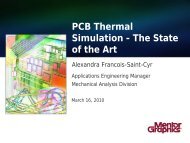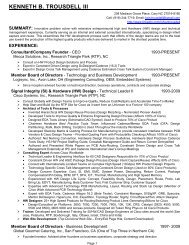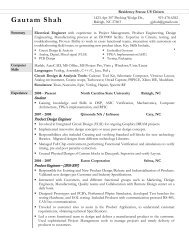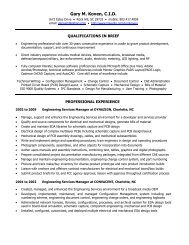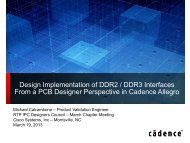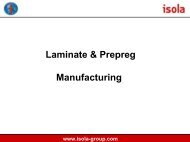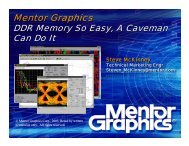Test Fixture Design Presentation - RTP Designers Council
Test Fixture Design Presentation - RTP Designers Council
Test Fixture Design Presentation - RTP Designers Council
You also want an ePaper? Increase the reach of your titles
YUMPU automatically turns print PDFs into web optimized ePapers that Google loves.
<strong>Fixture</strong> Types<br />
The industry uses several standard tester platforms<br />
HP307x, GenRad 227x, Zenthel, Spectrum …<br />
Most common <strong>Fixture</strong> actuations<br />
Vacuum: In ICT application Vacuum actuation is the most used technic<br />
Pneumatic: For fixtures with a very large amount of probes pneumatic actuation is used.<br />
Mechanical: Mostly used in Functional applications.<br />
Most common hold-down mechanisms or <strong>Fixture</strong> Types are<br />
Backer Gate<br />
Vacuum Cover (Box)<br />
ZSK – Clamshell<br />
Mechanical/Linear <strong>Fixture</strong><br />
Wired and Wireless (no wires) <strong>Fixture</strong>s<br />
17<br />
Traditional ICT <strong>Fixture</strong>s are wired from <strong>Test</strong> Probes to the Interface Panel.<br />
Sometimes a ICT <strong>Fixture</strong> is required in Wireless-Technology which means no wires are involved for<br />
transferring signals from the test points to the <strong>Test</strong>er. In this case there are double-ended test probes<br />
utilized in conjunction with a Transfer Board or Translator Board. The fixture stack-up is different to a<br />
traditionally wired fixture. There is no fixture pan involved like with a wired fixture.<br />
www.rns-usa.com



